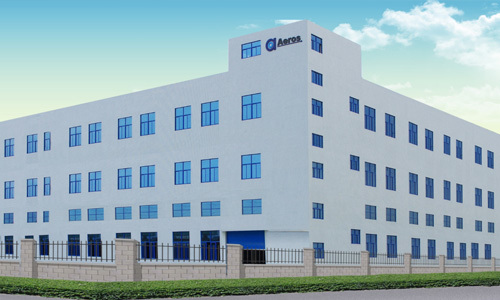Revolutionizing Wastewater Treatment with an Automatic Aeration Machine: Transforming Efficiency and Sustainability

2024/11/22
Revolutionizing Wastewater Treatment with an Automatic Aeration Machine
Table of Contents
- Introduction to Wastewater Treatment and Aeration
- The Importance of Effective Aeration in Wastewater Treatment
- What is an Automatic Aeration Machine?
- Benefits of Using Automatic Aeration Machines
- How Automatic Aeration Machines Work
- Applications of Automatic Aeration Machines in Industry
- Choosing the Right Automatic Aeration Machine for Your Needs
- The Future of Wastewater Treatment Technology
- Frequently Asked Questions
- Conclusion
Introduction to Wastewater Treatment and Aeration
Wastewater treatment plays a crucial role in environmental conservation and public health. As industrialization and urbanization continue to grow, the demand for efficient and sustainable wastewater management solutions has never been greater. Among the various technologies used for wastewater treatment, **aeration** is a key process that facilitates the breakdown of organic matter by introducing oxygen into the wastewater. The advent of automatic aeration machines represents a significant leap forward in this field, offering enhanced efficiency and effectiveness.
The Importance of Effective Aeration in Wastewater Treatment
Aeration is essential in the wastewater treatment process for several reasons:
1. Promotes Biological Activity
In aerobic treatment processes, microorganisms break down organic materials, converting them into harmless byproducts. Effective aeration ensures that these microorganisms receive the oxygen they need to thrive, leading to faster and more effective treatment.
2. Reduces Odors
Improperly treated wastewater can produce unpleasant odors, often due to anaerobic conditions. By maintaining aerobic conditions through efficient aeration, these odors can be significantly reduced or eliminated.
3. Enhances Filtration
Aeration helps to keep solids suspended in the water, which can improve the efficiency of downstream filtration and separation processes. This results in clearer effluent and reduces the burden on additional treatment steps.
What is an Automatic Aeration Machine?
An automatic aeration machine is a device designed to optimize the aeration process in wastewater treatment systems. These machines automatically adjust the aeration rate based on real-time conditions, ensuring that the right amount of oxygen is supplied at all times. This advanced technology helps maintain optimal biological activity and improves overall treatment efficiency.
Key Features of Automatic Aeration Machines
- **Intelligent Control Systems**: Equipped with sensors and controllers, these machines can monitor various parameters such as dissolved oxygen levels, flow rates, and temperature to adjust aeration automatically.
- **Energy Efficiency**: Automatic aeration machines are designed to operate efficiently, consuming less energy while delivering optimal performance.
- **Durability and Maintenance**: Constructed from robust materials, these machines require minimal maintenance and operate reliably over long periods.
Benefits of Using Automatic Aeration Machines
The implementation of automatic aeration machines in wastewater treatment systems offers numerous advantages:
1. Increased Efficiency
By automatically adjusting aeration levels based on real-time data, these machines ensure that microorganisms have the optimal conditions for growth and activity. This leads to faster treatment times and reduced operational costs.
2. Cost Savings
With energy-efficient designs, automatic aeration machines help lower energy consumption, contributing to significant cost savings over time. Additionally, their ability to optimize the treatment process can reduce the need for chemical additives.
3. Enhanced Environmental Compliance
As regulations regarding wastewater discharge become more stringent, the reliability of automatic aeration machines in maintaining treatment standards helps facilities comply with environmental laws and avoid costly fines.
4. Simplified Operation
Automated systems reduce the need for constant manual monitoring and adjustments. This frees up personnel to focus on other critical tasks, increasing overall operational efficiency.
How Automatic Aeration Machines Work
Understanding the functioning of automatic aeration machines is essential to appreciate their benefits fully.
1. Monitoring
The system continuously monitors the conditions within the wastewater treatment facility. Sensors track parameters like dissolved oxygen levels, pH, and flow rates.
2. Data Analysis
Real-time data is analyzed by the machine’s control system, which determines the required aeration levels necessary for optimal treatment.
3. Aeration Adjustment
Based on the analysis, the machine adjusts the aeration rate automatically. This could involve increasing or decreasing the airflow to maintain optimal oxygen levels.
4. Feedback Loop
The system operates in a closed feedback loop, continually adjusting the aeration to respond to changing conditions, ensuring consistent performance.
Applications of Automatic Aeration Machines in Industry
Automatic aeration machines are versatile and can be applied in various settings, including:
1. Municipal Wastewater Treatment Plants
These facilities benefit greatly from automatic aeration systems, as they handle large volumes of wastewater and require consistent treatment to meet regulatory standards.
2. Industrial Wastewater Treatment
Industries such as food and beverage, pharmaceuticals, and textiles generate significant amounts of wastewater rich in organic matter. Automatic aeration machines help manage these challenges efficiently.
3. Agricultural Runoff Treatment
With the increasing focus on sustainable farming practices, automatic aeration machines are being utilized to treat runoff water, ensuring that harmful pollutants are removed before entering natural water bodies.
Choosing the Right Automatic Aeration Machine for Your Needs
Selecting the appropriate automatic aeration machine involves several factors:
1. Assessing System Requirements
Consider the size of your wastewater treatment facility, the volume of wastewater processed, and the specific treatment goals you want to achieve.
2. Evaluating Technology
Look for machines equipped with advanced monitoring and control systems that can adapt to varying conditions.
3. Reviewing Energy Efficiency
Choose machines designed with energy efficiency in mind to maximize cost savings and environmental benefits.
4. Considering Maintenance Needs
Opt for machines that require minimal maintenance and offer support services to ensure long-term reliability.
The Future of Wastewater Treatment Technology
As global water scarcity and environmental concerns continue to rise, the future of wastewater treatment will likely focus on innovative technologies that enhance efficiency and sustainability. Automatic aeration machines will play a pivotal role in this evolution, driven by advancements in artificial intelligence, IoT, and data analytics. The integration of these technologies will enable even more precise control over wastewater treatment processes, leading to better outcomes for both the environment and public health.
Frequently Asked Questions
1. What is the primary function of an automatic aeration machine?
The primary function of an automatic aeration machine is to supply the necessary oxygen to microorganisms in wastewater treatment systems, enhancing their biological activity for effective organic matter breakdown.
2. How does an automatic aeration machine improve energy efficiency?
By automatically adjusting aeration rates based on real-time data, these machines optimize oxygen supply and reduce unnecessary energy consumption compared to traditional manual systems.
3. Can automatic aeration machines be used in small-scale treatment facilities?
Yes, automatic aeration machines are versatile and can be scaled to fit the needs of both large municipal plants and smaller industrial or agricultural systems.
4. What maintenance is required for automatic aeration machines?
While they generally require minimal maintenance, periodic checks of sensors, cleaning of aeration diffusers, and inspections of mechanical components are necessary to ensure optimal performance.
5. How do automatic aeration machines contribute to environmental sustainability?
By enhancing the efficiency of wastewater treatment, these machines help reduce pollutant discharge into natural water bodies, supporting efforts to protect ecosystems and public health.
Conclusion
The introduction of **automatic aeration machines** in wastewater treatment marks a significant advancement in the industry. By optimizing the aeration process, these machines enhance treatment efficiency, reduce operational costs, and promote environmental sustainability. As technology continues to evolve, the role of automatic aeration machines will become even more critical in addressing the challenges of wastewater management in the face of growing population and industrial demands. Investing in this innovative technology is not just about improving wastewater treatment; it is also about securing a healthier, more sustainable future for our planet.
Automatic aeration machine








